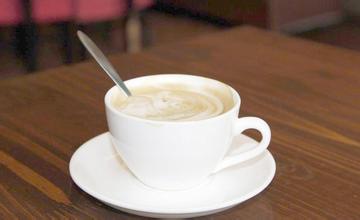Introduction of Coffee varieties, Flavor, Flavor and Fine Coffee beans in Xida Mochizo producing area
Sidamo grows in the southernmost Ethiopian plateau between 4600 and 7200 feet above sea level (Sidamo province). It is a famous boutique coffee area in southern Ethiopia, bordering Kenya, southeast of Gemma, just south of the capital, usually sweet and loved by most people. its annual output is about 225000 bags / 60kg, with a smaller bean body than Longberry, with gray in the green, and in the sun drying field in Sidamo. Coffee is placed in hemp net wooden frame, workers take turns in the sun exposure, manual stirring coffee, sun Sidamo is usually marked with G4 exit, washing Sidamo because the treatment process is more perfect, so most of them are exported at G2 level.
The coffee in Sidamo has a variety of flavors. Different soil types, microclimates and countless native coffee species, towering mountains, highlands, plateaus, valleys and plains, diverse topography, and the geology of the area belongs to nutrient-rich, well-drained volcanic soil. the depth of the soil is nearly two meters, and the surface soil is dark brown or brown. The biggest advantage of the area is that the soil fertility is maintained through the circulation of organic matter, using the withered leaves of the surrounding trees or the residual roots of the plants as fertilizer. Therefore, the coffee produced in cities and towns has obvious differences and characteristics. In 2010-2012, it continuously obtained the high score of CR92~94, the authoritative coffee evaluation website in the United States. Thus it can be seen that the raw beans in this area are extraordinary.
Sidamo Coffee beans are grayish, thick in some places and small in others, with soft and strong acidity, mellow and sweet and spicy. It is one of the courtyard coffees in the highlands of southern Ethiopia. Unlike ordinary African coffee, Sidamo has clear acidity, smooth taste and exquisite floral scent from the Sidamo region of southern Ethiopia.
Blind test: Ethiopian coffee is mostly in the sun, but now it seems to have changed in recent years, and the fine coffee movement has made people's mouths more and more picky.
Less gossip, the aroma is obvious: according to Westerners, it is rose tea, but I think it is more like the taste of brown sugar and ginger soup, as well as the tonality of honey and oranges. This one is obviously purer than other Sidamo. Under the background of sour and sweet flavor, you can taste the flavor of candied fruit, flowers and chocolate. The palate is a little thin, but very smooth. The tail rhyme has the taste of milk, caramel and chocolate, which is typical of Ethiopia. Coffee beans are very complex but distinct: Arabica, Robasta, Riberka origin: Brazil, Colombia, Mocha, Java, Mantenin, Blue Mountain. Kona coffee flavor indicators: sour and bitter are different, everyone's taste preferences are different, it is impossible to judge which is good? As long as you like white coffee milk coffee coffee with cream and sugar with milk and sugar coffee plain coffee plain coffee is so divided? Cappuccino cappuccino latte latte Blue Mountain Blue Mountain Coffee mocha Mocha Irish coffee Irish Coffee espresso Italian extra strong (what's the difference between this and plain coffee? ) [click to view the original text]
The division of the landlord is not very accurate, according to an example: the cappuccino cappuccino you mentioned is not the same type as some of the following, such as Blue Mountain Blue Mountain Coffee and mocha Mocha. Because cappuccino cappuccino and commonly known as Irish coffee Irish coffee are fancy coffee, that is, with alcohol, fresh milk, or special seasoning and so on. I think the classification of coffee is relative to different books. If it is not according to the idea of the landlord, I think it can be divided into this way: the first kind can be divided into flowers

Important Notice :
前街咖啡 FrontStreet Coffee has moved to new addredd:
FrontStreet Coffee Address: 315,Donghua East Road,GuangZhou
Tel:020 38364473
- Prev

Ethiopian Coffee Manor Flavor Description Producing fine coffee beans Features
Ethiopia is dominated by mountainous plateaus, mostly subordinate to Ethiopian plateau, the central and western parts are the main plateau, accounting for 2/3 of the whole territory, the Great Rift Valley of East Africa runs through the whole territory, with an average altitude of nearly 3,000 meters, known as the roof of Africa. The terrain around the plateau gradually declines. The Darol depression in the north drops to 113 meters below sea level, the lowest point in the country. The Red Sea coast is a narrow strip of plain
- Next

Introduction to the characteristics of High-quality Coffee in the graded Coffee production area of Yega Ficher Manor
Yega Xuefei's grading system is not based on the number of eyes, but on the proportion of defective beans in the total number of raw beans. Commonly seen are wash G2 and sun G3 Yega Chuefei, G1 is the highest grade, Yega Xuefei, which has the lowest defect rate and the best quality, can be rated as Grade 1 only after hand selection. Here is a brief introduction to these three Chevy.
Related
- Does Rose Summer choose Blue, Green or Red? Detailed explanation of Rose Summer Coffee plots and Classification in Panamanian Jade Manor
- What is the difference between the origin, producing area, processing plant, cooperative and manor of coffee beans?
- How fine does the espresso powder fit? how to grind the espresso?
- Sca coffee roasting degree color card coffee roasting degree 8 roasting color values what do you mean?
- The practice of lattes: how to make lattes at home
- Introduction to Indonesian Fine Coffee beans-- Java Coffee producing area of Indonesian Arabica Coffee
- How much will the flavor of light and medium roasted rose summer be expressed? What baking level is rose summer suitable for?
- Introduction to the characteristics of washing, sun-drying or wet-planing coffee commonly used in Mantenin, Indonesia
- Price characteristics of Arabica Coffee Bean Starbucks introduction to Manning Coffee Bean Taste producing area Variety Manor
- What is the authentic Yega flavor? What are the flavor characteristics of the really excellent Yejasuffi coffee beans?

